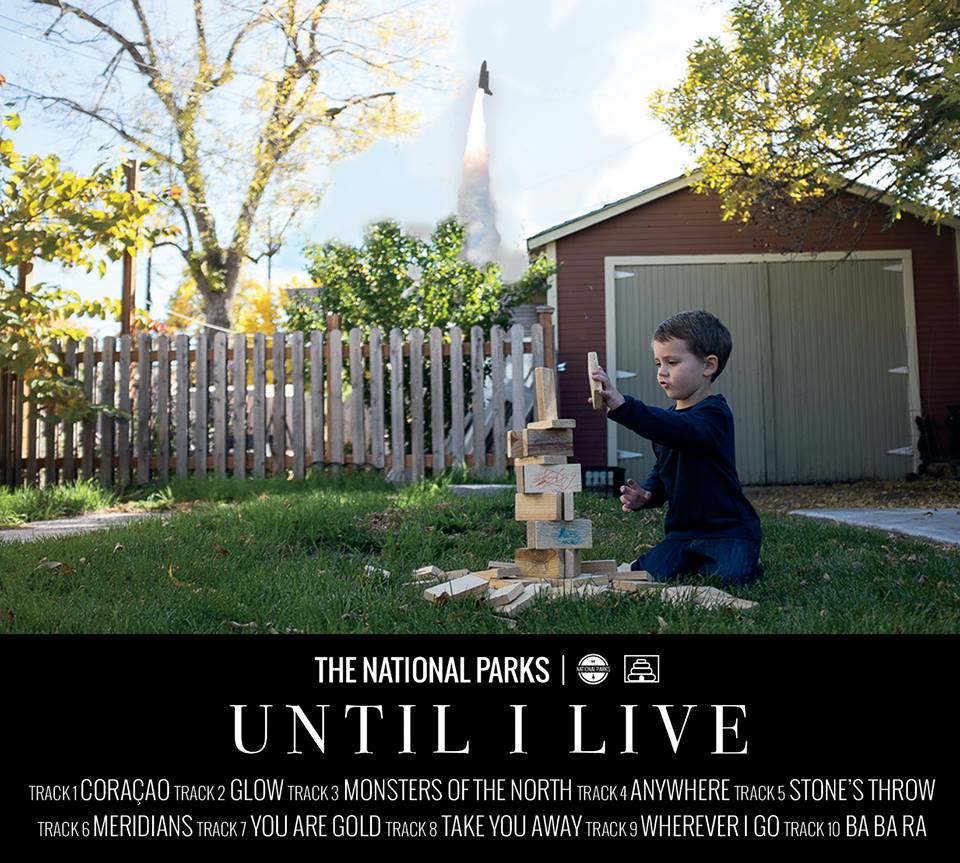
The National Parks
Until I Live
At a certain point, around the end of the ’00s, interest arose around certain new bands who were giving folk music a new shape and vitality. While alternative acts like Bon Iver and Fleet Foxes, who were still being traditionally inspired by secluded cabin stays and moonlit bonfires, even made it to the Grammy Awards (the former taking two golden gramophones home, as Best New Artist and Best Alternative Music Album in 2011, the latter nominated as Best Folk Music Album the following year), bands like West London folk scene heralds and Island Records signee Mumford & Sons rode their banjos all the way from small venues in Britain to major festivals and big, worldwide arena tours in a rather short time, letting their genre get out of its national niche to gain widespread recognition and making its way into a massive audience’s heart, reaching the mainstream.
This great success paved the road for a galaxy of other akin artists, putting more and more space between them and the bearded mandolin player cliché, and starting to mix pop and electronica with the traditional folk sound; among them, Of Monsters and Men (hailing all the way from Iceland) and The Lumineers are perhaps the most famous.
Following in these footsteps, The National Parks started their career in 2013, when frontman Brady Parks (the band’s name is no coincidence) met Sidney Macfarlane in Provo, Utah. Since then, with others joining the band at different times, The National Parks have been working on a full-sounding folk, closer to that of an orchestra than to a lonesome minstrel.
[soundcloud url=”https://api.soundcloud.com/tracks/203211615″ params=”color=ff5500″ width=”100%” height=”166″ iframe=”true” /]
Their first album, Young, is strongly reminiscence of Fleet Foxes’s winter atmospheres, its eleven tracks winding smoothly, picking up where the Seattle band left off when they split in 2012. The opening track “Helsinki,” brings The National Parks back to Mumford’s country-esque banjo-sound immediately after, yet moves them forward to the cheerful pop of the title track, all adding a personal touch with Macfarlane’s voice to act as Parks’s counterpart. As the album title suggests, this debut is the work of a fresh band with an urge to play music, still trying to sort out how to get the best from all the ideas in their mind, trying many different roads to get to the right sound.
 With Until I Live, the band’s sophomore release, Parks took his songwriting a step further away from folk and into the realm of pop. From the very first track, it’s evident how the soft mood of the previous album left space for a brighter approach, adding a touch of the latest Coldplay (another band able to grow from an indie act to a mainstream pop act without losing its momentum) to their already composite sound: trumpets and keys welcome the listener to a new page in The National Parks’s adventure. This layering, though, doesn’t result in a cluttered juxtaposition of disparate songs: throughout the whole album, every single aspect and facet is balanced to create a pleasant sonicscape. Every track is a climax, a crescendo that originates from a simple voice and guitar or piano intro, growing little by little to finally burst into an explosion of stomping bass drums and violins, choirs and brasses.
With Until I Live, the band’s sophomore release, Parks took his songwriting a step further away from folk and into the realm of pop. From the very first track, it’s evident how the soft mood of the previous album left space for a brighter approach, adding a touch of the latest Coldplay (another band able to grow from an indie act to a mainstream pop act without losing its momentum) to their already composite sound: trumpets and keys welcome the listener to a new page in The National Parks’s adventure. This layering, though, doesn’t result in a cluttered juxtaposition of disparate songs: throughout the whole album, every single aspect and facet is balanced to create a pleasant sonicscape. Every track is a climax, a crescendo that originates from a simple voice and guitar or piano intro, growing little by little to finally burst into an explosion of stomping bass drums and violins, choirs and brasses.
But the evolution isn’t just songwriting-related: listening to the record, it’s clear how the band lost the touch of naivety that was still tangible in the previous LP, working now with a clear and precise goal in mind and drawing from the experiences gained by making and touring Young. This new awareness, though, comes with the downside of slight overproduction, a finishing that, at times, polishes the tracks too much, especially in the louder moments—the howl in “Monsters of the North,” for instance, or “Glow,” are two examples of this flaw. And it’s a pity that this glossiness might risk overpowering the essential feeling of empathy with the listener, turning the music in a purely aesthetic experience and creating a distance that, though it may seem to, doesn’t actually belong to pop music, let alone to an extremely heartfelt genre like folk.
https://www.youtube.com/watch?v=K_VPhm7HlCQ&w=580
The National Parks sing of happy love, offering tracks that are impossible not to dance to. Their longing for a universal sentiment is the drive behind Until I Live’s opening track “Coração” and its video: an ode to positive vibrations, to the most powerful relationships on Earth, may them be with family, lovers, or friends—to the human connection itself, something that goes beyond geographical, cultural, and generational boundaries or gaps. Something that makes people want to sing, “I will never let you go /… You’re in my heart” to their significant other even when gloomy moments come, always looking at the bright side of things, never letting the sun set on life.
The melancholy of traditional folk that permeated Young is now far removed, even in an apparently classic acoustic track like “You Are Gold.” There’s no room for negativity and bad feelings in Parks’s songs: “I don’t wanna die / Until I live” is the mantra repeated in the closing “BA BA RA,” a violin-driven nursery rhyme, a song about being young and carefree that fits the mood that dominates the whole album. But among all the up-tempo tracks on the LP, there is still room for great ballads like “Anywhere.” Together with the already mentioned “You Are Gold,” these are possibly the best songs The National Parks have penned so far, utilizing their talent at crafting big arrangements without overcharging the sound or losing feeling. Meanwhile, a track like “Meridians” surprises us with spacey, psychedelic synths on a tribal rhythm that create an unexpected and interesting clash, made even more complex by the pop melody of the voice track.
Just like the kid in Until I Live’s cover artwork, The National Parks have started to build a towering sound with their music. The caution and the care required to avoid the collapse of its building blocks are the same needed to create the powerful and remarkable score in which all the players do their part to create the magic of harmony. And it’s in the band’s hands, now, whether they can transform the wooden blocks into a skyrocketing jet.
***
Feature photograph by Justin Hackworth.




